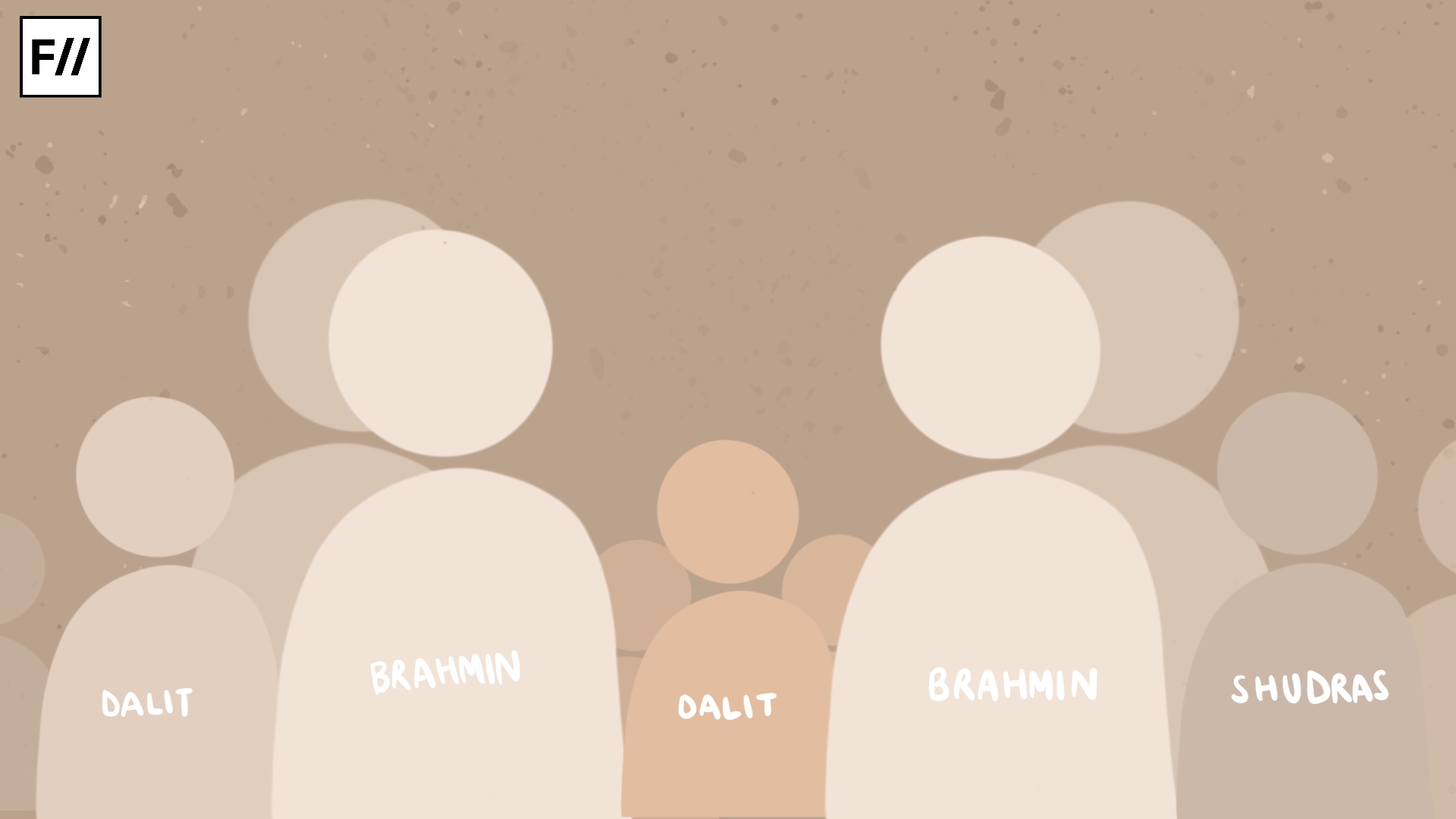Nelson Mandela once said, ‘Education is the most powerful weapon which you can use to change the world.‘ This statement holds profound truth in itself, but in the Indian context, education has become a mechanism of exclusion instead of a tool of empowerment.
In the recent three decades, with the rise in privatisation of education, it has become a ‘commodity’ accessible to those who can afford it financially.
In the recent three decades, with the rise in privatisation of education, it has become a ‘commodity’ accessible to those who can afford it financially. We have shifted from ‘Education for all‘ to education for the few. Rather than expanding opportunities and mobility, privatisation further entrenched inequalities, creating new barriers for marginalised and oppressed sections.
Roots of privatisation of education
The seeds of privatisation were sown in the era of economic liberalisation in 1991. The government’s support for pro-poor initiatives like scholarships, academics, and hostel tuition waivers has started weakening since the 1980s. Primary and higher education were in the hands of the government, but due to increasing demand for higher and professional education and due to various constraints, it became a burden for the government, which in turn resulted in amendments.

The failure to provide good quality education, adequate infrastructure, research facilities, and a dynamic curriculum led to the empowerment of the private sector by the government itself. Privatisation came up as a deregulated freedom for economic activities, and antagonists consider it an institutional mechanism of earning maximum economic profit.
The increase in private institutions has been rapid in the last three decades, which led to a rapid increase in enrollment in private institutions as compared to public institutions.
Privatisation and reinforcement of inequality
The goal of privatising education was quality and massification, which resulted in entrenched divisions, restricted accessibility, and made education unaffordable for many. Private institutions cause irreversible socioeconomic disparities between the population’s rich and poor income groups by imposing excessive costs. A pattern is found in India where the poor go to public institutions and the doors of private institutions are accessible to only the elite and other affordable sections.
The unregulated public schools cater to low-income families. In the recent three decades, as a result of privatisation, education has become an economic good rather than a social service, which limits private education to a few privileged groups.
These private companies are primarily focused on making money; therefore, access, quality, and equity are of little interest to them. The marginalised classes stand to suffer the most from this. This is the first step that leads education to commercialisation when institutions keep profit over social responsibility. First, as higher education continues to expand, the Supreme Court’s decision that these institutions are exempt from reservation quotas has created an equity problem.
India’s affirmative action laws, which were intended to correct historical injustices, now only apply to a small percentage of institutions.
India’s affirmative action laws, which were intended to correct historical injustices, now only apply to a small percentage of institutions. Second, lower-income students’ options for an affordable private education have been reduced due to gradual changes in loan regulations, fee waivers, and scholarship programs.
These policy changes highlight the growing financial barriers for marginalised groups, making it more difficult for them to gain access to quality education. Poor parents make efforts to send their kids to private schools in the hopes of improving their chances, but wealthy people take advantage of the system, purchasing degrees and restricting lower-class students’ access to reasonably priced education, hence perpetuating inequality.

Sandhya states, ‘The education is highly commercialised.‘ He argues that with increasing privatisation, education has become a profit-making business where heavy bribes are taken for admissions, hence limiting the education to the hands of elites. This profit-driven model of education has limited the access to education to a few elites, which reinforces stratification and perpetuates inequality in a system that is already dealing with inequity.
Implications of privatisation of education for social mobility
Education has emerged as the primary means by which capable individuals with limited means can move above their parents’ class. However, this opportunity has been limited by the privatisation of India’s educational system. Because privatisation creates a system in which economic means dictate access to high-quality education, it guarantees that kids from marginalised areas will always be caught in a cycle of poverty and limited opportunities.
The elite schools, which include unaided private schools and exclusive public schools, make up the top tier. Because of the high costs, only the wealthiest can afford them. This phenomenon directly undermines the claim that education serves as a ladder for upward mobility because the gap between the rich and the poor in access to education has only widened. The locations of private institutions and their fees have favored the upper strata of society, at the same time limiting access for the marginalised by removing the reservation.
On the basis of socio-economic background, trends of poor people attending public institutions and elites making their way to private institutions can be seen. The private institutions focus on overall development and have better infrastructure to deliver necessary skills, whereas public institutions lack all these, due to which pupils from public schools lag behind and have very few chances of moving up. Many children from working-class and low-income households experience a variety of barriers and disadvantages that affect their capacity to succeed in school, resulting in poor performance. Thus, the opportunities for upward mobility are limited.

In order to be qualified for specialised jobs, individuals with particular educational backgrounds and skill sets are required under the current form of occupational organisation. The public institutions and unrecognised and unregulated private institutions lack infrastructure and resources for providing those skills, and hence the public pupils have a very low chance of occupational mobility.
NEP’s ‘graded autonomy’
In the name of bringing more flexibility and freedom to universities, the concept of ‘graded autonomy’ is introduced in NEP 2020. This is projected as the freedom to adapt and tailor the courses as per student need. Eight universities, along with the University of Delhi, are provided with graded autonomy. But under the guise of academic freedom, the correlation between financial autonomy and academic freedom is hidden. In the name of catering to student needs and autonomy, institutions are allowed to establish new centers and departments, introduce new courses, admit foreign students, recruit international faculty, and determine fees without UGC’s regulation, given that the courses are funded by tuition fees, not the government.
In the name of bringing more flexibility and freedom to universities, the concept of ‘graded autonomy’ is introduced in NEP 2020.
This provides a scope for private players, whose focus is on commercialisation of education, ignoring all other aspects, resulting in high fees and no scholarship, students will be caught in the trap of student debt. There is a requirement of freedom, but NEP introduces autonomy. The state is seperating itself from education and seems to refrain from responsibilities related to it.
Missing numbers
Privatisation led to an overall increase in GER, but it failed to cater to the equitable enrollment patterns. The caste, class, and gender play an important role in enrollment patterns. Private schools have grown significantly in India in recent years; their percentage of elementary school students increased from 19.49% in 2007–08 to 28% in 2020. Oxfam India claims that this increase hasn’t led to more equitable enrollment trends, especially for underserved communities.
With a participation percentage of 12.7%, children from Scheduled Tribes (ST) are the least likely to attend private schools, followed by those from Scheduled Castes (SC) and Other Backward Classes (OBCs). The question of finances is persistent in front of Dalit and Adiwasis. There is a direct correlation between the income of parents and the schools they attend. The lower fees of public, unregulated schools pose questions of the quality of education and knowledge imparted to oppressed people.

In the times where the state itself is absolving itself from education and education is capitalised, we need to rethink, particularly in the context of India, where caste, class and gender play very important roles in every aspect of life. The developed countries may find privatisation suitable, but this is not the case with India. We need affirmative steps to ensure equality of opportunity for all.
There is an urgent need for strengthening public education. The main reason to shift to private schools is the deteriorated quality of education in public schools, and reversing this trend will require a concerted effort to improve infrastructure, teaching quality, and curriculum in public institutions. Unchecked growth of private institutions and unregulated fees continuously perpetuates inequality; stronger regulation is needed to ensure equity.
As India moves forward, it is crucial to prioritise inclusive, equitable, and high-quality education for all. Privatisation should not come at the cost of access and opportunity. Instead of catering to a privileged few, education must be reimagined as the driving force for social mobility and empowerment across all communities. Only then can we truly harness the power of education to change the world, as Mandela envisioned.
References –
- Chekki, D. A. (1970). Social Stratification and Trends of Social Mobility in Modern India. Sociologus, 20(2), 146–163. https://www.jstor.org/stable/43644450
- Dash, A. K., Mishra, P., & Markose, L. H. (2023). The privatisation of Indian education: Challenges & solutions, with special reference to the primary education system. Deshbandhu Journal of Social Sciences, 1(1), 93-119.
- Das, S. (2013). Education and social mobility: A textual analysis in Indian perspective. Educationia Confab, 2(1), 2–9.
- Datta, L., & Kundu, U. (2021). Privatisation of Education in India: A Critical View. International Journal of Social Sciences and Management, 8(2), 352–358. https://doi.org/10.3126/ijssm.v8i2.34563
- Jamkar, V., & Johnstone, C. (2021). Privatisation and Unequal Access in India. International Higher Education, 106, 34–36. https://ejournals.bc.edu/index.php/ihe/article/view/14545
- K, S. K. (2024, January 25). Missing Numbers: Corrosive Impact Of Privatisation Of Education And Healthcare On Dalits And Adivasis. Outlook India. https://www.outlookindia.com/national/missing-numbers-corrosive-impact-of-privatis ation-of-education-and-healthcare-on-dalits-and-adivasis
- Nambissan, G. B. (2012). Private Schools for the Poor: Business as Usual? Economic and Political Weekly, 47(41), 51–58. https://www.jstor.org/stable/41720245
- Ratnaprabha, J. (2018). The privatisation of Higher Education and the Marginalised Classes in India: Issues and Challenges. International Journal of Research in Social Sciences International Journal of Research in Social Sciences, 8, 2249–2496. https://ijmra.us/project%20doc/2018/IJRSS_NOVEMBER2018/IJMRA-14639.pdf
- Sharma, N., & Sharma, A. (2024, May 17). A Trojan Horse for privatisation of education. Deccan Herald. https://www.deccanherald.com/opinion/a-trojan-horse-for-privatisation-of-education-3027752
- Sandhya, R. (n.d.). PRIVATisATION AND ITS IMPACT ON EDUCATION. https://www.xisdxjxsu.asia/V16-8-18.pdf
- Tilak, J. B. G. (1991). The privatisation of higher education. Prospects, 21(2), 227–239. https://doi.org/10.1007/bf02336063
- Velaskar, P. (1990). Unequal Schooling as a Factor in the Reproduction of Social Inequality in India. Sociological Bulletin, 39(1/2), 131–145. https://www.jstor.org/stable/23634530




